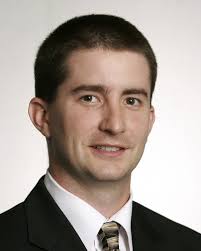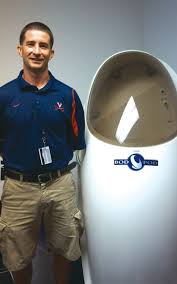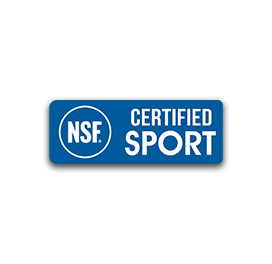Athletic Excellence in College Depends on Optimal Sports Nutrition
Randy Bird started a biology major at Virginia Tech because he planned to go to medical school, maybe becoming an orthopedic surgeon so he could stay connected to athletes in the sports that he loved. When prospects of a medical career lost their luster, he  switched to human nutrition, foods and exercise science to achieve the same goal.
switched to human nutrition, foods and exercise science to achieve the same goal.
Bird is Director of Sports Nutrition at the University of Virginia as well as the president of the 800+ member Collegiate and Professional Sports Dietitians Association (learn more about CPSDA at sportsrd.org), that serves colleges, pro teams, military and others.
“Back when I was starting at University of Kansas, in 2005, there were only 10 schools that had a full-time sports dietitian,” he says. “In the last nine years, we’ve gone from 10 to 45 schools, maybe close to 50 now,” including several schools with multiple staff members.
NCAA Lifted Food Restrictions at Universities
That growth likely will accelerate because the NCAA has lifted restrictions on food that universities can provide to athletes, scrapping regulations that once permitted bagels but not cream cheese or peanut butter.
That rule change should spark even more job growth because you need somebody who knows what they’re doing managing that food,” Bird says. “The profession was already growing. That new rule, or the removal of the old rule, really drives us forward even more.”
Some athletes imagined that the change would turn college into a cruise ship, with lavish buffets at every turn, but the reality involves strategic fueling that will be implemented differently at different colleges.
 “It’s going to be up to the school what they can afford to do and what’s best for their athletes,” Bird says. “In some situations, a school might be able to do a breakfast and lunch set up for athletes. For us, that’s not a viable option,” because of the logistics of classroom and practice locations.
“It’s going to be up to the school what they can afford to do and what’s best for their athletes,” Bird says. “In some situations, a school might be able to do a breakfast and lunch set up for athletes. For us, that’s not a viable option,” because of the logistics of classroom and practice locations.
“The athletes still have a meal plan, but we’re going to be using it more to provide the additional calories that our athletes need to make them whole, to repair the damage they’ve done from their workouts and to maintain their health.” Improvements in nutrition can improve safety as well as health for the athletes.
“A big majority of injuries happen when the athletes are fatigued,” Bird says. “If they’re underfueled, they’re going to be spending a lot more of their games and practices in that fatigued state. If they’re underfueled, they’re not recovering as well so you’re going to be having more muscle injuries.
Fuel starts with food but includes appropriate supplementation, such as shakes to replenish calories and vitamins, and The Right Stuff to sustain hydration.
That’s where The Right Stuff comes in – to aid in hydration and replace the electrolytes during practice and games.
“We want to provide food as the baseline,” Bird says. “Food needs to be the majority of what our athletes are getting. However, there’s plenty of room still for supplementation too. That’s where The Right Stuff comes in – to aid in hydration and pre-loading and replacement of electrolytes lost during practice and games.”
Hydration is Critical for Collegiate Athletes’ Performance
Bird, who heard of The Right Stuff through the CPSDA, started using it at Kansas and brought it to Virginia, first for football, where the NASA-developed formula has eliminated the need for IVs during game halftimes and drastically reduced the number needed for practices.
“It has cut down on the amount of IVs we have to give,” Bird says. “To me, that’s tremendous. When I started working here, the first summer during training camp, we had IVs that we had to do just to make sure guys were hydrated when they were going out to that second practice.
“We’ve developed a strategy to help them hydrate. If they can come into the game hydrated and then maintain these hydration practices during the game, there’s no need for an IV. They’re not losing as much, and they’re replacing what they lose.”
Other sports, including lacrosse, soccer, and tennis, are also using The Right Stuff and have reported excellent results too, he says.
Each packet has nearly 1.8 grams of sodium in it, which is critical for those marathon runners and triathletes. “A typical tennis player could easily sweat out five or six pounds of fluid,” Bird says, losing at least 2-3 grams of sodium. “Using The Right Stuff is an easy way to stay up with that electrolyte loss.”






